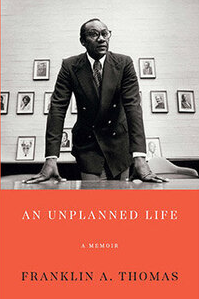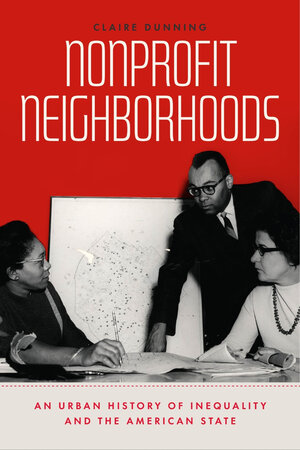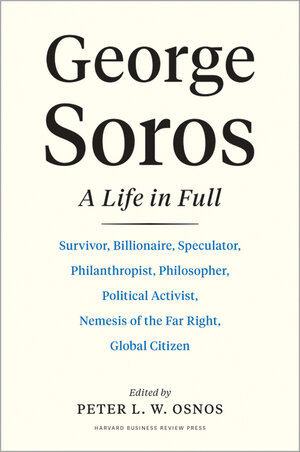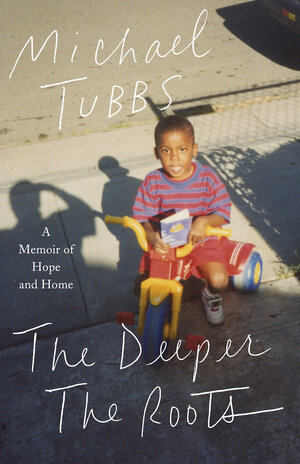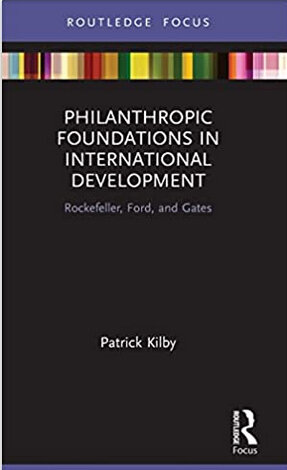An Unplanned Life: A Memoir
Today, Franklin A. Thomas (1934-2021) may be best known as the first Black president of the Ford Foundation—or of any major foundation at the time of his appointment in 1979—but by then he had already achieved several careers’ worth of successes. In the posthumously published An Unplanned Life: A Memoir, he traces his trajectory from Brooklyn’s Bedford-Stuyvesant neighborhood, where he was born to Caribbean immigrant parents, to Columbia University, the U.S. Air Force, Columbia Law, and a career that spanned the public, private, and nonprofit sectors, dismantling structural barriers and winning accolades at every stage.
“I was taught that if you were smart, had good values, and worked hard, there were no limits to what you could do, even though I was growing up in a period of intense racial segregation,” Thomas writes. He credits the strong, capable, and smart Black women of his family with shaping his values and resilience—his mother, who worked as a housekeeper (and as a factory lathe operator during World War II), and four older sisters. (His father left when Thomas was 3 years old, returned seven years later after suffering a stroke, and died the next year, soon followed by his older brother.) Younger generations of Black leaders such as Darren Walker and Michael Tubbs also have cited their single mothers’ influence on their life trajectories.
Despite the book’s title, it is clear that Thomas took control of his life early on: At age 9, he aspired to become a lawyer after his mother was swindled; at 11, he transferred to a different Boy Scouts troop so he could lead a drum and bugle corps. He received a basketball scholarship to Columbia, where he set a record for rebounds and became the first Black American to be named captain but also experienced segregation firsthand when playing in the South, and became involved in the NAACP’s efforts to address residential racial segregation. Although he faced institutional racism during his required ROTC Air Force training in South Carolina, he chose the Air Force for his compulsory military service, rising to the rank of captain. And despite the career opportunities the Air Force offered, he stuck to his plan to go to law school. Every subsequent career move seems to lead to his groundbreaking work at the Bedford-Stuyvesant Restoration Corporation (Restoration) and Ford. Perhaps what was “unplanned” was that in every job, he immediately was asked to take on high-profile, at times controversial, responsibilities.
After working at the Federal Housing and Home Finance Agency (now the Department of Housing and Urban Development) helping cities access federal financing for housing and development, he joined the criminal division of the U.S. Attorney’s Office for the Southern District of New York. He was then appointed a deputy police commissioner and worked to reform the civilian complaint review board—which included no civilians then—to address police brutality. Although the new board structure was defeated in a referendum, “I had a responsibility to serve both the department and the community, and I took that seriously,” he writes. This willingness to take a nuanced stance, to straddle sectors and build bridges, would serve him well in his subsequent work.
For such an accomplished life, the book is surprisingly short. Then again, it is a memoir of his professional life, not an autobiography. Thomas devotes several chapters to his work with Restoration, which was the result of Robert F. Kennedy’s selection of Bedford-Stuyvesant as the site for showcasing his “urban renewal” campaign. The conflicts among the civic leaders in the Central Brooklyn Coordinating Council and between them and Thomas Jones, the board chair of Kennedy’s community development corporation (CDC), as well as business leaders, make for excruciating reading. Thomas took the job of CEO anyway. “[T]here was a part of me that believed I would be in a position to take my knowledge and training back to Brooklyn, to my community, and achieve things on behalf of that community that otherwise wouldn’t be achieved,” he explains. “[T]here was a sense of destiny at the time.”
Thomas set out to fulfill Restoration’s vision of bringing together city and federal governments, the private sector, foundations, and the community to collaborate on urban revitalization, with an added focus on engaging local people and institutions at every stage of the development process, building knowledge and capacity within the community.
So in 1967, Thomas set out to fulfill Restoration’s vision of bringing together city and federal governments, the private sector, foundations, and the community to collaborate on urban revitalization, with an added focus on engaging local people and institutions at every stage of the development process, building knowledge and capacity within the community. Again and again, he emphasizes the need to involve “the people closest to the problem,” those who “have a long-term stake in the community.” With a $750,000 grant from Ford and additional commitments from the Rockefeller and Astor foundations, Restoration essentially created a community development industry “from scratch,” he writes. The organization trained neighborhood youth to replace, repair, and repaint window frames, railings, stoops, and sidewalks; secured commitments from banks and mortgage companies for a $100 million mortgage pool to enable residents buy or rehabilitate homes; helped establish Medgar Evers College; developed Restoration Plaza; and launched a development company and a general contracting company as wholly owned subsidiaries. Thomas does not pretend that there were no problems during his 10-year tenure; nor does he dwell on them: “There were bumps and delays owing to our lack of expertise, but we stayed true to our vision of development.”
He maintains that understated tone throughout the memoir, even when describing tense or frustrating situations—of which there were many, including disputes over wages and organizational structure—or even triumphs, as when he was tapped to lead Ford, which was front-page news. “Much was made about the fact that Ford had appointed a Black president,” he writes, quoting several headlines and comments, but neither the foundation nor Thomas highlighted his race. “[A]lthough one is always sensitized by their background and interests, you can’t transfer your role as an advocate into your role as the head of an enterprise whose role is broader than advocacy,” he argues. “In discharging your responsibilities, you should always be informed by your natural instincts and experiences, but not be limited by them.”
As president, Thomas immediately had to address the board’s concerns about over-extension, high management costs relative to grant dollars, and a siloed and segmented program structure, as well as his own “alarm [at] the top-heavy bureaucratic structure and the paternalism toward grantees.”
As a trustee, Thomas was well aware of the financial and programmatic turmoil Ford was in: Illiquid investments had reduced the foundation's assets from $4 billion to $1.7 billion in one year, Henry Ford II had resigned from the board, and then-president McGeorge Bundy had slashed staff size by half. As president, Thomas immediately had to address the board’s concerns about over-extension, high management costs relative to grant dollars, and a siloed and segmented program structure, as well as his own “alarm [at] the top-heavy bureaucratic structure and the paternalism toward grantees.” In what was called the “May Day Massacre,” he further cut staff from about 800 to 550, including senior program officers, some of whom filed charges of age discrimination. Programmatic changes included focusing its work globally around six themes, what today would be called cross-cutting issues: Urban Poverty and the Disadvantaged, Rural Poverty and Resources, Human Rights and Social Justice, Education, International Political and Economic Issues, and Government and Public Policy. Within those areas, Thomas had Susan V. Berresford—who would soon become the foundation’s first woman vice president and in 1996 would succeed Thomas to become its first woman president—double the size of women’s programs.
Community development programs also were expanded, notably with the creation in 1980 of the Local Initiatives Support Corporation (LISC), an outgrowth of the foundation’s support for CDCs in low-income communities. Knowing from his experience in Bedford-Stuyvesant the important role the private sector plays in community development, and given the Reagan administration’s cuts to federal funding for social programs, Thomas forged partnerships with corporations, arguing that foundations were uniquely positioned to mediate between businesses and nonprofits and the people they serve. He also believed in “balance sheet philanthropy”—“using capital, rather than income, to achieve a charitable purpose,” which sounds like a precursor to impact investing—as well as in investing in local people and connecting their initiatives to policy making. It is striking that the issues Thomas was working to address decades ago—police brutality, philanthropic paternalism, and the need to center the people closest to the problem—remain so relevant today.
“[A]fter just a few years the early and loud criticism I had received…disappeared,” Thomas notes in a chapter blandly titled “Positive Results.” “I just had to try to keep my vision strong.” That lesson also must have helped him in chairing the Rockefeller-funded Study Commission on U.S. Policy Toward Southern Africa, a role he took on shortly after joining Ford, having visited South Africa as a board member of Citibank. “The period between 1979 and 1981 was one of the most intense I’ve ever experienced,” he admits. “Between the South Africa Commission and the Ford presidency, every ounce of my energy was fully engaged at all times on problems of concern to many people.” The commission’s recommendation that existing sanctions against the apartheid regime remain in place and new investment be prohibited but not all existing investment be pulled, as well as his participation in a U.S. government advisory group, drew criticism from various corners; a meeting he convened of Black and white South Africans, Americans, and others erupted in a violent outburst.
Through such difficult situations, Thomas persevered in bringing people together, making connections, building bridges: “I’d spent a great deal of time in the course of my working life listening to and talking with people about difficult topics, often trying to help them find some common ground or get to a place where they were able to hear one another.” After leaving Ford, he continued his work with the commission and later chaired the September 11th Fund, which disbursed $528 million in grants before closing in December 2004.
Except for a few brief glimpses, the book does not reveal much in the way of intimately personal observations; most of the contemporaneous records cited are from newspapers, president’s annual reviews, and reports. A resolution unanimously adopted at his final board meeting as Ford president—during his tenure the foundation’s assets tripled from $2.2 billion in 1979 to $7.7 billion in 1995 and annual spending from $119 million to $420 million—cited his “personal modesty—a sense that the [f]oundation’s work speaks louder than words.” He himself writes: “The work is there and what it represents speaks for itself. It did become clear, however, that documentation could be useful and would also honor the people who worked with me and the values, ideals, and principles that form the foundation of everything I’ve done.” And honor them he does; every chapter is peopled with family members, classmates, friends, mentors, colleagues, collaborators, and negotiation partners—from "the matriarchs" of the Bedford-Stuyvesant civic groups to Nelson Mandela—making it clear that his achievements are not just his own but collective ones.
An Unplanned Life: A Memoir reads as a gift of modesty and wisdom from someone who reached rare heights—not only professionally, not only as a pathbreaking Black leader and advocate who made an outsize impact on the community development field and the philanthropic sector more broadly, but beyond.
Kyoko Uchida is features editor at Philanthropy News Digest.


